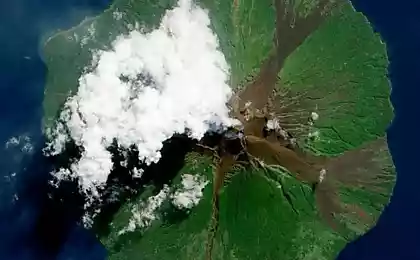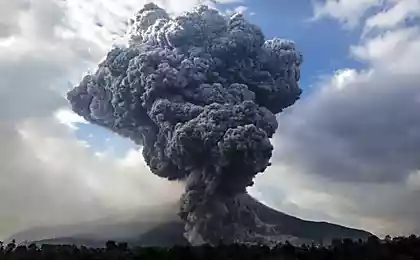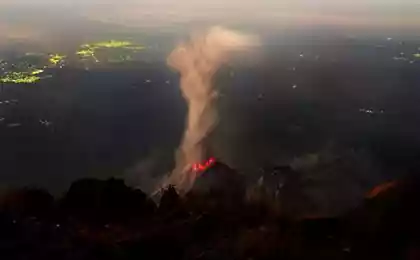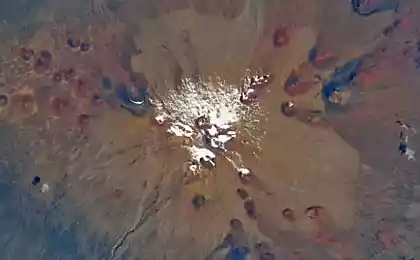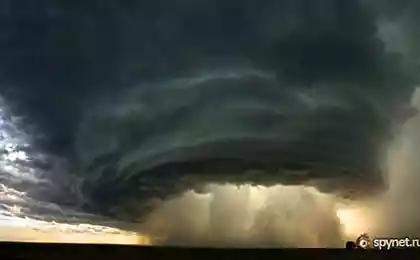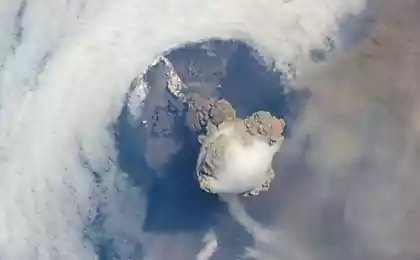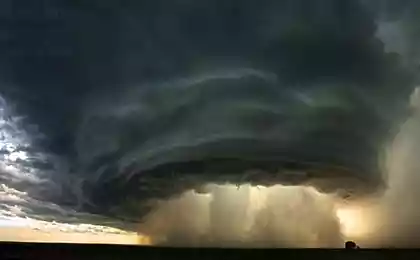487
Problems that can create the new Icelandic volcano
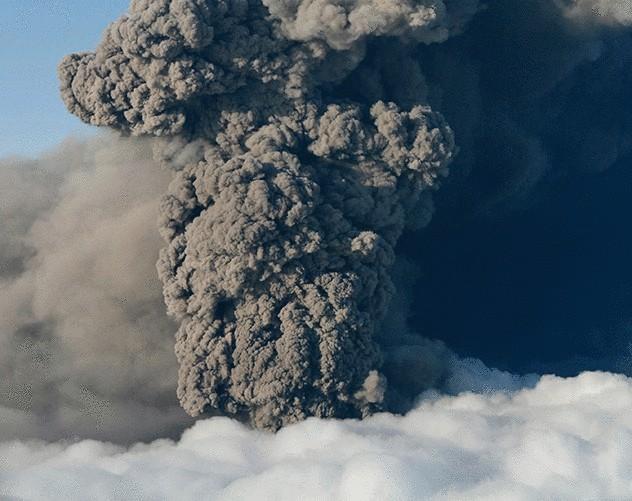
The eruption of the eyjafjallajökull volcano in Iceland in 2010. Photo: ReutersНе five years, as the Icelandic volcano once again threatens the global economy – the government of Iceland suggest that in the near future can begin the eruption of the volcano Bardarbunga, which is located about 300 km from Reykjavik.
This week, the meteorological service of Iceland, which monitors volcanic activity, raised the level of risk for carriers to orange level, the fourth in a five-level classification. Red, the fifth level is the eruption. According to volcanologists, if it comes to that, all air traffic over the North Atlantic will again be paralyzed. It will be recalled that in April 2010, the eyjafjallajökull volcano has already shown what they are capable of Icelandic volcanoes, causing the world airline industry loss of $ 1.5 to 2.5 billion euros.
Hidden ice
The volcano Bardarbunga is the second largest mountain in Iceland, but it scares volcanologists, not its altitude of 2000 meters. This volcano is under the largest glacier of Iceland – Vatnajokull. Its Caldera has a width of more than 10 kilometers and a depth of about 700 meters. And all this splendor is buried under a body of ice. The volcano levoberegny, experts say that perhaps over the last 10 thousand years he gave more lava than any other volcano on the planet. While he is not tired of frequent eruptions, the last major eruption here was over a hundred years ago that is just annoying experts – long silence usually ends with loud cries.
Now it all started relatively harmless: the earthquake some increase, but measurements show that aftershocks occur at depths from 5 to 12 kilometers, and signs of migration of seismic activity up there. However, this does not mean that there can be a rapid breakthrough of lava in the Caldera.

Subglacial eruption 1996: a small dash on the background of the column of vapor plane
The eruption may not be very large, for example, as it was in 1996, but to predict what it will be this time, is simply impossible. Nature can choose one of several scenarios.
The most harmless variant is a small outpouring of lava, thawing glacier, and the appearance of local waterways. Local residents in the vicinity, and tourists have evacuated, so that particular problem will not. Will rise into the sky a huge column of steam, but the steam does not interfere with air traffic.
If the outpouring of lava will begin at the Eastern or Northern part of the volcano, you can expect emissions of ash and pumice, but this eruption won't be catastrophic. Likely to occur a massive melting of the glacier with the formation of debris flow-lohara, which, however, can easily unload in a glacial valley in the North-East of Iceland.
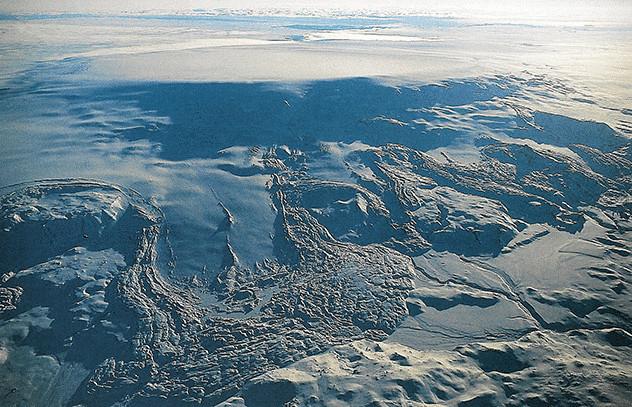
In the event of a Bardarbunga eruption, the whole mass of the ice will vaporize and fly in the air
But if the eruption will start in the Central part of Bardarbunga, the situation will become much more minor. Huge ice pot begins to melt, and the mass of the water will come into contact with the magma flow. If the process will affect the deposits of the old magma, one can expect the formation of a huge column of vapor and ash up from 10 to 30 kilometers. It will be Eyjafjallajökull-2, and possibly in the enhanced version.
Pessimists believe that, in principle, nothing prevents to explode and other volcanoes under glaciers Vatnajökull. Not afraid that some of them have been silent for over 8,000 years old – the fact that they should ever be activated. In this case you can safely say that in the next six months are already all over the Northern hemisphere of the planet, we can forget about aviation. Nobody is going to fly. Well, if using the glacial rift will a new rift, i.e. the zone of expansion of the ocean, then all of all our high technology will be forgotten for many years. Will be a question of banal survival. Though, most likely, nothing worse than third embodiment are expected.
Island vulnerability
After the eruption of the eyjafjallajökull volcano in April 2010, the attitude to the natural processes of this kind much has changed. First of all, it turned out that Europe is not really ready to serious natural disasters, even those that are not associated with fatalities. Just off several days of civil aviation. The world the Europeans began to crumble.
For example, Spain, which chaired the EU at the time, were unable to organize an emergency teleconference of transport Ministers of the EU. The network was so overloaded that the representatives of several countries, including Finland, just couldn't connect. In the end, the conference was held only four days after the first ban on flights. I've found that a United Europe there is no single center for emergency situations, there is a system of coordination of national and European norms and rules of action in emergency.
Colleagues from the Finnish broadcasting company YLE came to the conclusion that in the case of more serious problems, the only connection will remain two-way transmitters, but they can be rubbish if the earth will fall on top of a powerful magnetic storm.
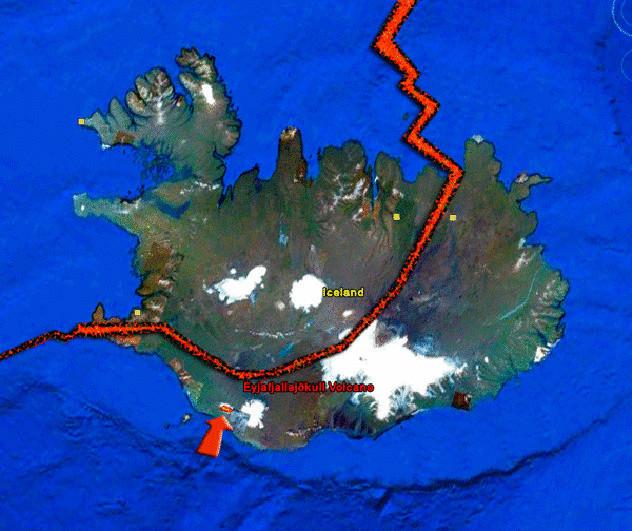
The red line is the rift the rift that separates America from Europe. Large white spot is the Vatnajökull glacier, which is hidden under Bárðarbunga
And Iceland will cause new attacks. This island, with an area of just over 100 thousand square kilometers, belongs to two different tectonic plates: the North American and Eurasian, which are constantly parted in different directions. For Iceland, the characteristic of continuous volcanism, and classic conical volcanoes here are quite rare, the most common type of fissure volcanism. A typical example is the volcano Laki. This is a Grand chain of 110 craters on the tectonic rift with a length of over 25 kilometers.
A tremendous eruption of 1783, not only led to the deaths of more than 10 thousand Icelanders, but also to famine throughout Europe – hanging in the atmosphere volcanic aerosol. Only in Britain poisonous gases of a volcano have killed more than 23 thousand people. Then the air temperature over most of the Eurasia fell, which resulted in significant crop failure.
The sad list of eruptions can continue. Iceland is doomed to endless eruption that will affect the life of Europe. That is why scientists are so closely follow the life of this most active volcanoes of the island of our planet.
source: slon.ru
Source: /users/1077
